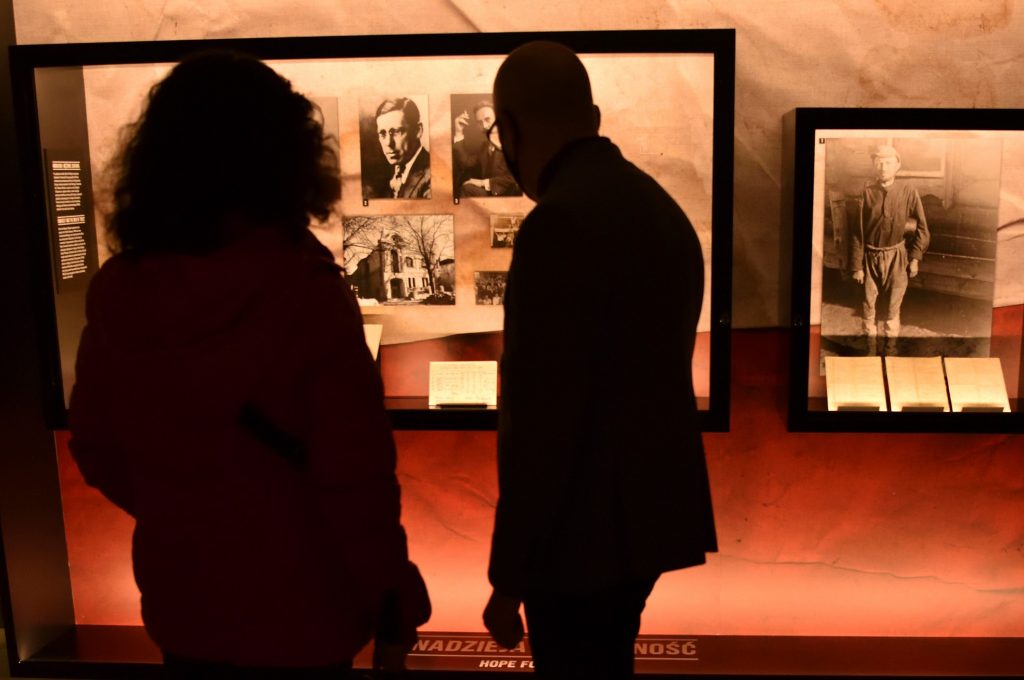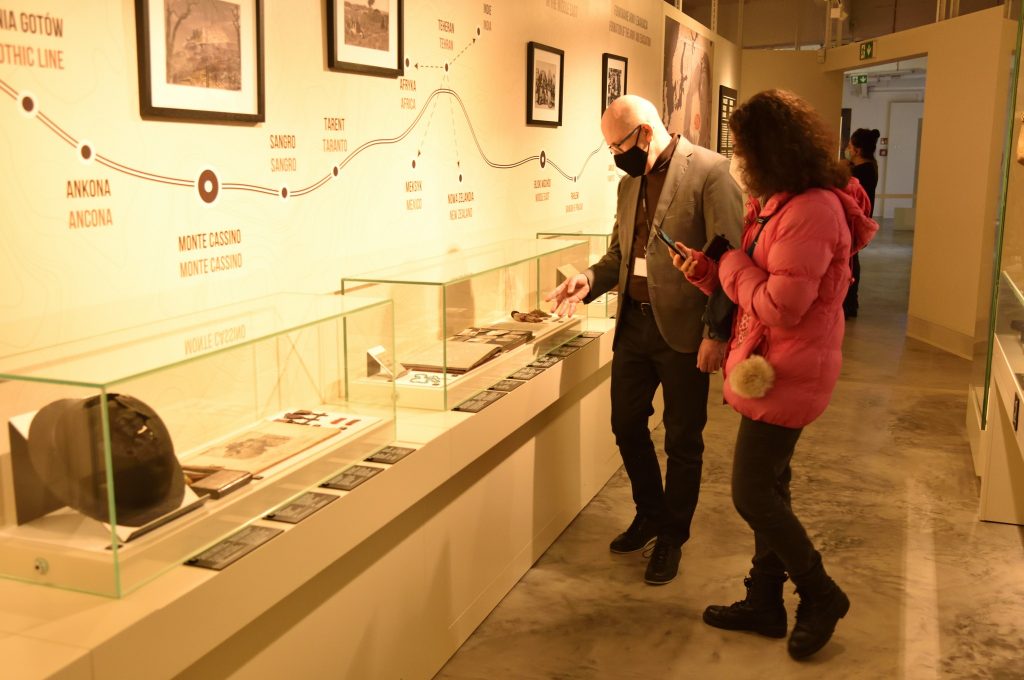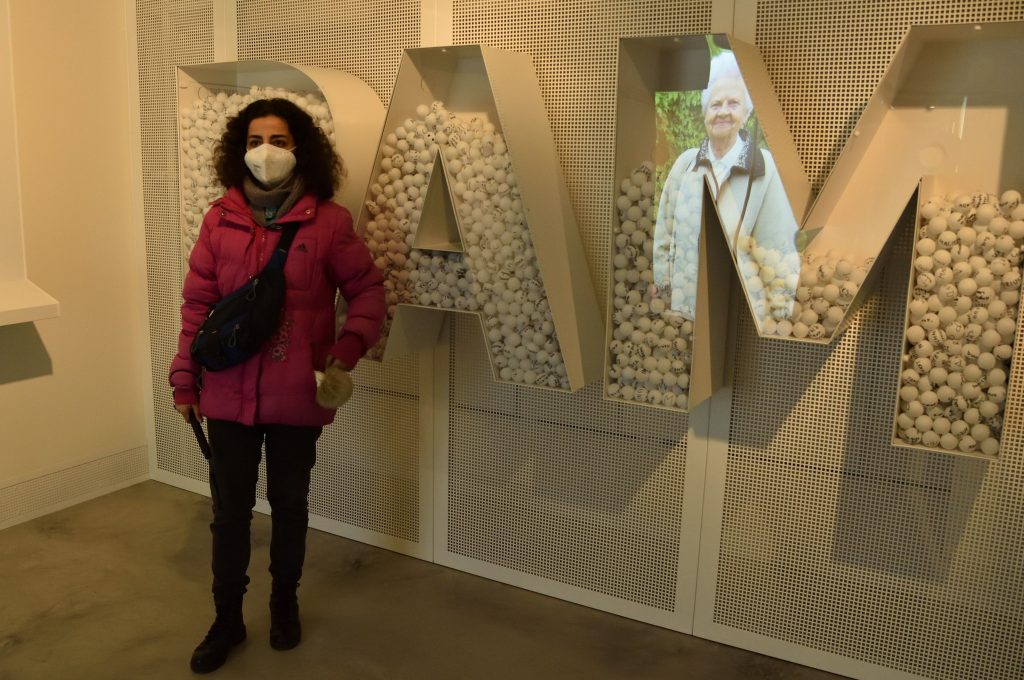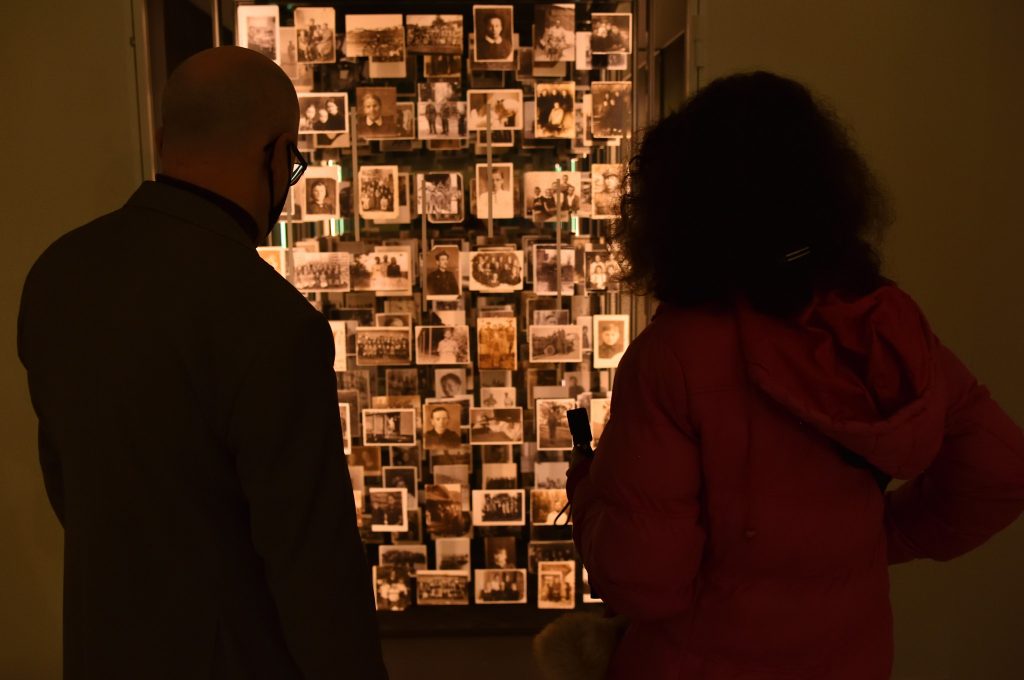Narges Kharghani came to look for in the Museum’s collection some materials to her film about Maria Bajdan, a polish Sybirak, who together with Anders’ Army got to Iran and decided to stay there. She got married, gave birth to children. — Mrs. Maria died in 2021, but among the six years of working on the film I talked to her a lot and made many records — said the director. I’ve got her stories in polish and farsi language. I think of another production, this time devoted to her friend, Eleonora Barska, who still lives in Iran.
Narges Kharghani saw the permanent exhibition of the Sybir Memorial Museum including the Katyn Massacre Memorial — I know Andrzej Wajda’s film — she said. In the last room of our permanent exhibition she joined those who leave their message — I have written: ‘World Without War’ — she said throwing a ball with the inscription in her mutual language to one of the letters of the inscription “pamięć” (‘memory’).
Tomasz Danilecki, PhD, gave the director a tour and also helped looking for some information about the place where Maria Bajdan got with her family as part of deportations. The documentalist also spent time in the Museum Collections Department, where its manager, Katarzyna Śliwowska, helped to select photographs from the pre-war Borderlands. — I am interested in photos from Nowogrodek and its vicinity, that’s where Maria came from — said Narges Kharghani.
In the spring of 1942, the evacuation of General Anders’s Army from the Soviet Union began. About 110 thousand people (around 70,000 soldiers and 40,000 civilians, mostly women and children) sailed by ships across the Caspian Sea to Iran. There they were placed in refugee camps in Pahlevi (now Bandar e-Anzali), Mashhad, Isfahan, Ahwaz and Tehran. Even though they were warmly welcomed by the local people, many died of disease and exhaustion. By 1945, almost all of them were evacuated further to the Middle East, and then scattered across continents. However, a small group of Poles remained in Iran, whose descendants still live there today.
Narges Kharghani came to look for in the Museum’s collection some materials to her film about Maria Bajdan, a polish Sybirak, who together with Anders’ Army got to Iran and decided to stay there. She got married, gave birth to children. — Mrs. Maria died in 2021, but among the six years of working on the film I talked to her a lot and made many records — said the director. I’ve got her stories in polish and farsi language. I think of another production, this time devoted to her friend, Eleonora Barska, who still lives in Iran.
Narges Kharghani saw the permanent exhibition of the Sybir Memorial Museum including the Katyn Massacre Memorial — I know Andrzej Wajda’s film — she said. In the last room of our permanent exhibition she joined those who leave their message — I have written: ‘World Without War’ — she said throwing a ball with the inscription in her mutual language to one of the letters of the inscription “pamięć” (‘memory’).
Tomasz Danilecki, PhD, gave the director a tour and also helped looking for some information about the place where Maria Bajdan got with her family as part of deportations. The documentalist also spent time in the Museum Collections Department, where its manager, Katarzyna Śliwowska, helped to select photographs from the pre-war Borderlands. — I am interested in photos from Nowogrodek and its vicinity, that’s where Maria came from — said Narges Kharghani.
In the spring of 1942, the evacuation of General Anders’s Army from the Soviet Union began. About 110 thousand people (around 70,000 soldiers and 40,000 civilians, mostly women and children) sailed by ships across the Caspian Sea to Iran. There they were placed in refugee camps in Pahlevi (now Bandar e-Anzali), Mashhad, Isfahan, Ahwaz and Tehran. Even though they were warmly welcomed by the local people, many died of disease and exhaustion. By 1945, almost all of them were evacuated further to the Middle East, and then scattered across continents. However, a small group of Poles remained in Iran, whose descendants still live there today.














